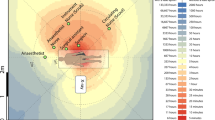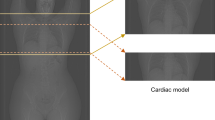Background/Case Report:
External-beam radiotherapy of complex-shaped areas is sometimes difficult to realize. In a patient with chronic lymphatic leukemia (CLL) infiltrates of the skin of the whole scalp, conventional external-beam radiotherapy with electrons or photons was not able to treat the target sufficiently. Thus, the authors developed a brachytherapy moulage technique using a customized helmet (polyethylene) with flexible interstitial plastic applicators and irradiated the target very homogeneously with a microselectron 192Ir HDR (high-dose-rate) source (2.0 Gy daily fractionated; 36.0 Gy total dose related to the reference points in 3 mm focus depth). Technical difficulties, CT-supported three-dimensional conformal treatment planning, and verification with TLD probe measurements are described. The treatment was well tolerated and resulted in complete local remission of the CLL infiltrates within a follow-up of 30 months.
Conclusion:
The presented treatment of lymphoma infiltrates at the scalp by HDR moulage techniques is exceptional but safe and practicable to achieve local tumor control.
Hintergrund/Fallbericht:
Die strahlentherapeutische Behandlung komplex geformter Areale wie der gesamten Kopfhaut eines Patienten mit symptomatischen Manifestationen einer chronischen lymphatischen Leukämie (CLL) ist mit einer konventionellen Elektronen- oder Photonenteletherapie nicht zu realisieren. Mittels eines selbstgefertigten, individuell angepassten Helms (Polyäthylen) als Träger von flexiblen interstitiellen Kunststoffapplikatoren konnte jedoch die gesamte Kopfhaut in 192Ir-HDR-(High-Dose-Rate-)Afterloading-Moulagetechnik sehr homogen bestrahlt werden (2,0 Gy täglich fraktioniert; summative Gesamtdosis 36,0 Gy, bezogen auf 3 mm Herdtiefe). Technische Schwierigkeiten, CT-gestützte, dreidimensionale konformale Bestrahlungsplanung und Verifikation mittels TLD-Dosismessungen werden beschrieben. Die Therapie wurde sehr gut toleriert und ergab eine vollständige lokale Remission der CLL-Infiltrate mit einer nunmehr 30 Monate anhaltenden lokalen Kontrolle.
Schlussfolgerung:
Eine HDR-Afterloading-Moulagetechnik in der vorgestellten Form ist eine außergewöhnliche, jedoch praktikable Methode zur Erfassung des komplexen Zielvolumens Kopfhaut.
Similar content being viewed by others
Author information
Authors and Affiliations
Corresponding author
Rights and permissions
About this article
Cite this article
Liebmann, A., Pohlmann, S., Heinicke, F. et al. Helmet Mold-Based Surface Brachytherapy for Homogeneous Scalp Treatment: a Case Report. Strahlenther Onkol 183, 211–214 (2007). https://doi.org/10.1007/s00066-007-1648-7
Received:
Revised:
Issue Date:
DOI: https://doi.org/10.1007/s00066-007-1648-7




